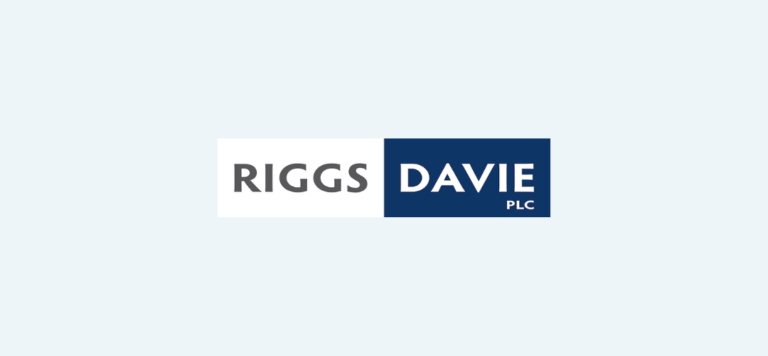Personal Branding for Business Owners
Like it or not, as a business owner, you’re not just running your business; you’re the living, breathing embodiment of it. What people think of you directly influences their perception of your business. It’s a two-way street where your personal brand and business brand are so intertwined.
Now, I know what you might be thinking: “Isn’t my business brand enough?” Well, here’s the catch – while your business brand is crucial, overlooking your personal brand is leaving half your potential untapped. Establishing your credibility as the founder doesn’t just add intelligence and authenticity to your business; it puts a relatable face to the name, creating a deeper connection with your audience and ultimately helping to grow your business.
Tom Peters hit the nail on the head in his Fast Company article when he said, “We are CEOs of our own companies: Me Inc.” Today, more than ever, being the chief marketer for ‘You’ is not just an option; it’s a necessity. It’s about growing an audience that resonates with your voice, validating your business through your personal story, and becoming an influencer in your own right. However, your personal brand must be established outside of your business brand. By separating your brand from your business’s brand you are still personifying the brand and connecting with your audience, but you avoid making your business brand about you instead of your customer.
In this blog, we’re rolling up our sleeves and diving into actionable steps to craft a personal brand that not only complements your business but strengthens it. Whether you’re a seasoned entrepreneur or just starting, these insights are your toolbox for building a brand that speaks volumes about who you are and what you stand for.
Understanding Personal Branding
The good thing about creating a personal brand, is you already know how to do it – you did it for your business after all! Your personal brand, just like your business brand, is the collection of associations, beliefs, feelings, attitudes, and expectations people hold about you. With personal branding, the goal is to intentionally create a narrative that is accurate, coherent, compelling, and differentiated.
For business owners, your personal brand humanizes your business brand and allows you to make a personal connection with your audience which is transferable to a connection with your business. The stronger someone feels connected to your brand, the more likely they are willing to pick it over competitors. But just like your business must have a competitive differentiator to be successful, your personal brand must too. With the proliferation of influencers, the competition of people vying for the attention of consumers has created an oversaturated market of… people… You must carve a unique niche in this market to garner the following you wish to receive.
Identifying Your Unique Value Proposition
So, you’re set to elevate your personal brand. How do we tackle that? Consistency is key, just like in your business communications. Start by crystalizing exactly how you want to be perceived. This clarity ensures that all your content and messaging resonate with the same core themes, creating a cohesive and powerful personal brand narrative.
Define Your Image
Start by asking yourself, “How do I want to be known?” This isn’t about creating a persona; it’s about authentically showcasing who you are and the story behind what you do. Jot down some words or phrases that you want people to associate with you. Are you an innovator? A compassionate leader? A creative problem-solver? These should mirror the ethos of your business however, you want to create a personal connection with your audience so consider who you are outside your business as well.
Align with Your Business Values
Your personal brand should be a reflection of your business’s values. What do you stand for, and how does that resonate with your business? Write down your top three personal values and see how they align with your business. This alignment is crucial as it ensures consistency and authenticity in both your personal and business brands.
Reflect on Your Journey
Take a deep dive into your past experiences and skills. What stories or milestones define you? How do these experiences connect to what you do now? This reflection isn’t about the destination but understanding the journey – the ups, the downs, and everything in between.
Crafting Your Personal Value Proposition
Create your personal value proposition. Use this formula: “For [your target audience], I am [your unique offering]. Unlike [your competition], I [what sets you apart] because of [your skills, experiences, traits].” This statement should be a clear, concise embodiment of who you are, what you bring to the table, and how you are unique.
Take inspiration from successful entrepreneurs like Sarah Blakely. When people think of her, they think of resilience, innovation, and empowerment. Now, think about yourself. What do you want people to think of when they hear your name?
Developing a Content Strategy
Typically at this point in the personal branding tutorial, we would tell you that you need to decide who your audience is and figure out what platforms they are on. But, as a business owner, you should already know who your audience is – because it’s your business’s target market. If you want to use your personal brand to grow your business, it makes sense to target an audience with whom your product or service would benefit.
You’ve already identified where your business thrives on social media, and that’s exactly where your personal brand should have a presence too. If you don’t know what platforms your target market is on, you can learn how to do that in our social media guide for small businesses.
On LinkedIn, for instance, focus on showcasing your expertise and thought leadership relevant to your business. Share insights, join discussions, and post articles that reflect your understanding and vision in your field.
On Instagram, let your business’s values shine through your personal story. Share the ‘why’ and ‘how’ of your business journey. This platform is perfect for creating an emotional connection with your audience. Remember, people love doing business with those they feel a personal connection to.
Content Themes and Topics
When it comes to the content itself, look back at your value proposition. What unique perspective or expertise can you offer? Use this to develop topics and themes for your content. For example, if you’re in the wellness industry, share tips, personal wellness routines, or insights into industry trends.
Don’t forget to leverage more casual platforms like Instagram or Facebook to showcase aspects of your life outside of business. This approach helps create deeper connections with your audience. Whether it’s a glimpse into your daily routine, a hobby you’re passionate about, or volunteer work you’re involved in, these personal snippets add depth to your professional image.
In all your communications, make sure to provide value. Whether it’s industry knowledge, personal insights, or simply inspiration, your content should contribute something meaningful to your audience. This approach not only builds your personal brand but also enhances your credibility and strengthens the connection between you and your audience.
Engage with Your Audience
t’s not enough to just post great content to build your personal brand you need to engage with your audience. You’re trying to humanize your brand after all, so you need to… act human. Every comment, message, or share is an opportunity to deepen connections. Respond genuinely, be present, and show that you value their interaction. This is where authenticity and vulnerability come into play. You need to be open and relatable or you won’t be perceived as authentic. Share your successes, sure, but also don’t shy away from the struggles and learning curves. It makes you more approachable and relatable. Building a business always has its struggles, so make sure to lean into those. Your personal brand should not be about trying to be perfect, it should be about being human.
Take a cue from Brené Brown – her authentic communication has bolstered her personal brand and deeply resonated with her audience. She doesn’t just talk about vulnerability and courage; she lives it, making her a powerful and relatable figure. By being authentic in your interactions, you’re building trust for yourself; and in turn, trust for your brand.
Monitor and Adapt Your Brand
As you grow and change, so too should your personal brand. It’s about keeping it in tune with the real you. Regular feedback from peers, mentors, and your audience is crucial in this process. Have open conversations about how you’re perceived and compare that to your own vision for your personal brand.
With the insights you gain, adjust and refine. If new experiences have shaped you, let them reflect in your brand. Update your narrative, skills, and even your approach, ensuring your personal brand stays as dynamic and current as your professional journey. It’s about authenticity and alignment, evolving naturally as you progress.
Your personal brand is a living part of your professional identity. Nurture it, let it grow with you, and it will continue to be a true representation of who you are and what you stand for.
Building and maintaining a personal brand is no small feat, but it’s an incredibly rewarding journey. It’s about putting the authentic you in the driver’s seat and steering your business towards greater success. By defining your unique value proposition, aligning with your business values, creating targeted content, engaging genuinely with your audience, and staying adaptable, you’re setting the stage for a personal brand that not only complements but grows your business. Your personal brand is your story – make it one that resonates, inspires, and stands the test of time.








